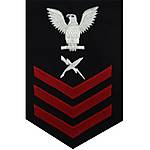|

(photo 1.14) Use strip wood with glue to strengthen the internal
structure.
|
Internal Structure
Since we now have a moisture-resistant base coat, all we need to do is insure
there is ample strength in the structure to support the weight of windows,
bricks, texture, and roofing.
To do this, flip the structure over, taking care not to loosen or jar any of
your glued corner pieces. Fix a series of “joist” throughout the structure,
paying particular attention to areas where there was heavy cutting (windows,
doors, etc.) that may place an uneven stress on any given area (1.14).
In our scene, we know we will be adding quite a bit of plaster coating to the
Merchants Market (“Marche Moreau”), and a heavy structure made of Plaster of
Paris brick work to the pharmacy. Using care not to get glue on any non-papered
surface, we will use a stronger glue (Fabritac - see glossary of suppliers),
which forms a more aggressive and durable bond to non-similar substances such as
wood and matt board, metal to ceramic, resin with plastic, etc. We will also use
a heavier grade of basswood, and double the overlap to further insure a strong
and durable structure.

(photo 1.15) View of 3D perspective, before any detailing
or elements are added. |
Once the glue has cured, you should be able to feel there is a solid rigidity to the structure. If not, add more strip wood and support material until you feel
comfortable moving the structure about in your hands and about the work surface.
This cannot be a fragile structure, as it will take quite a bit of handling,
nudging, and prodding as we move onward with the project. Once you feel you have
a sound base infrastructure, we are now ready to move on to the actual buildup
of the front facing of our waterfront street scene buildings.
|














